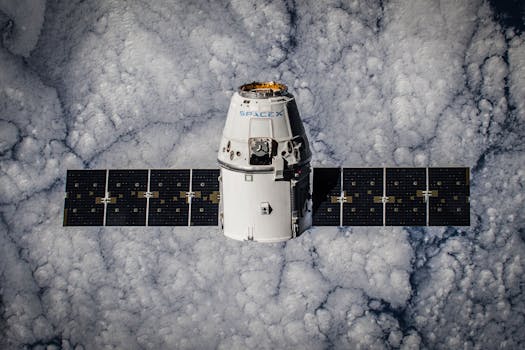
The future of satellite technology: trends and innovations is a rapidly evolving field that is transforming the way we communicate, navigate, and understand our planet. The future of satellite technology: trends and innovations is a key area of focus for many companies, governments, and organizations around the world. With the increasing demand for satellite-based services, the industry is experiencing a period of rapid growth and innovation.
Satellite technology has come a long way since the launch of the first artificial satellite, Sputnik, in 1957. Today, there are thousands of satellites orbiting the Earth, providing a wide range of services including communication, navigation, weather forecasting, and Earth observation. The future of satellite technology: trends and innovations is expected to be shaped by several factors, including advancements in technology, changes in government policies, and shifting market demand.
Advancements in Satellite Technology
One of the key drivers of the future of satellite technology: trends and innovations is the rapid advancement of technology. New technologies such as satellite constellations, reusable rockets, and advanced propulsion systems are transforming the satellite industry. Satellite constellations, for example, involve launching multiple satellites into orbit at the same time, providing global coverage and reducing the cost of launching individual satellites. Reusable rockets, on the other hand, are reducing the cost of accessing space and making it more affordable for companies and governments to launch satellites.
Another area of advancement is in the field of satellite communications. New technologies such as high-throughput satellites and laser communication systems are enabling faster and more reliable communication services. High-throughput satellites, for example, can provide speeds of up to 100 Gbps, making them ideal for applications such as broadband internet and video streaming. Laser communication systems, on the other hand, offer higher speeds and greater security than traditional radio frequency communication systems.
Emerging Trends in Satellite Technology
Several emerging trends are shaping the future of satellite technology: trends and innovations. One of the key trends is the increasing use of small satellites, also known as CubeSats. These satellites are smaller, cheaper, and more agile than traditional satellites, making them ideal for applications such as Earth observation and technology demonstration. Another trend is the growing use of satellite-based services for IoT applications. Satellites can provide connectivity to IoT devices in remote or hard-to-reach areas, enabling a wide range of applications such as smart farming, smart cities, and industrial automation.
The use of artificial intelligence and machine learning is another emerging trend in satellite technology. AI and ML can be used to analyze large amounts of data from satellites, providing insights and patterns that can inform decision-making. For example, AI can be used to analyze satellite imagery to detect changes in the environment, such as deforestation or natural disasters. ML can be used to predict weather patterns and improve weather forecasting.
Conclusion
In conclusion, the future of satellite technology: trends and innovations is a rapidly evolving field that is transforming the way we communicate, navigate, and understand our planet. With advancements in technology, emerging trends, and shifting market demand, the satellite industry is experiencing a period of rapid growth and innovation. As we look to the future, it is clear that satellite technology will play an increasingly important role in shaping our world and addressing some of the biggest challenges facing our planet.

